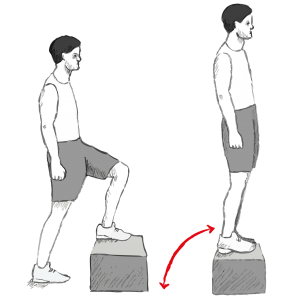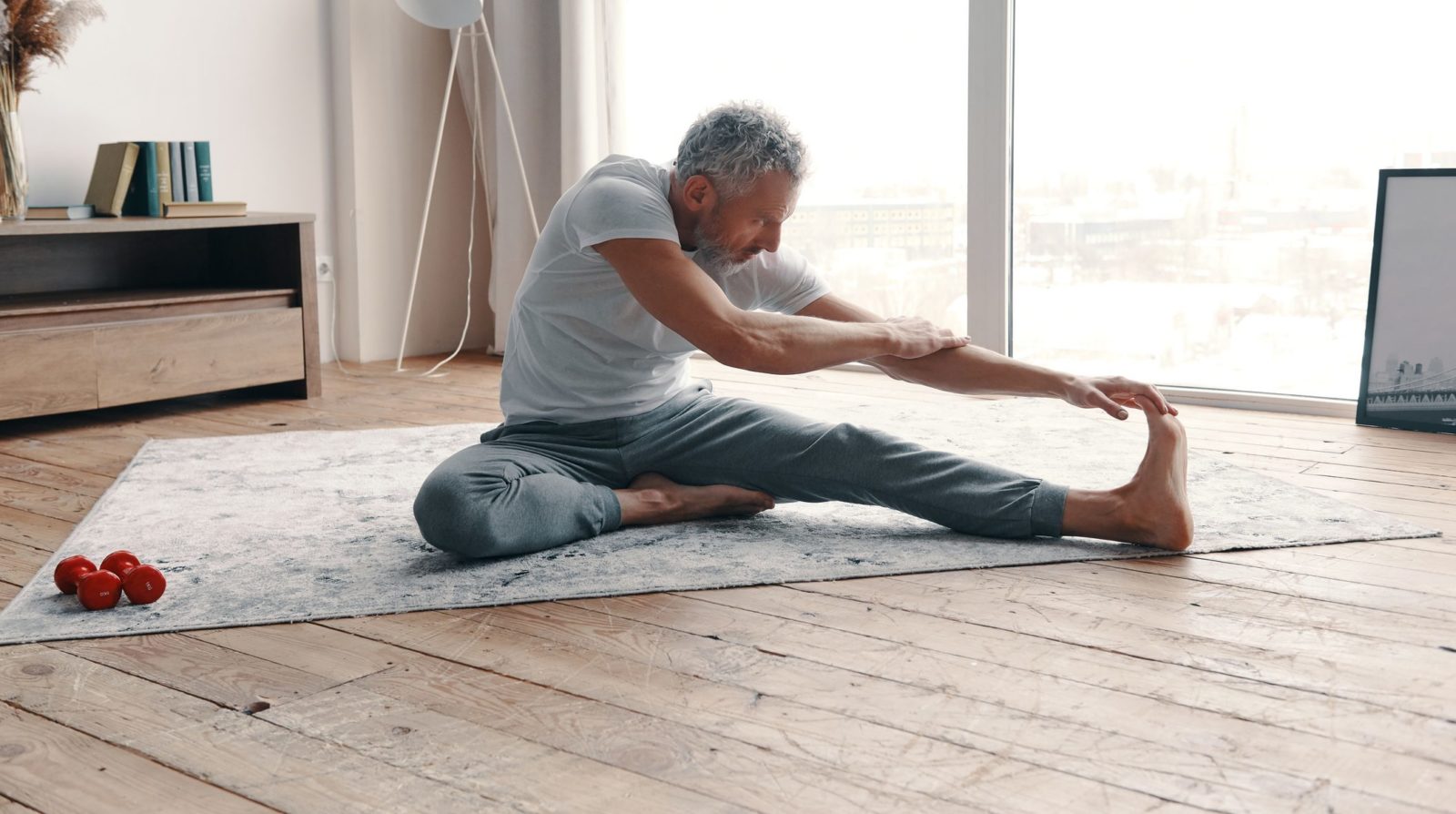Looking to level up your workout routine? Look no further than slant board exercises. Whether you’re a fitness enthusiast or just starting your journey, incorporating slant board exercises into your routine can take your fitness game to new heights. In this guide, we’ll explore the world of slant board exercises, from their benefits to a variety of exercises you can try. Get ready to sculpt and strengthen your body from head to toe with these innovative and effective exercises. So, grab your slant board and let’s dive in!
Table of Contents
Introduction
What is a Slant Board?
A slant board is a simple yet versatile piece of fitness equipment designed to improve your exercise routine. Essentially, it’s a board that’s angled, typically between 20 and 45 degrees, to create an inclined surface. This incline is ideal for targeting specific muscle groups and enhancing your workout. Whether you’re a fitness newbie or a seasoned athlete, incorporating slant board exercises into your routine can add a new dimension to your training. Think of it as the superhero cape for your workout—ordinary on its own but transformative when used correctly.
Benefits of Using a Slant Board
Using a slant board for slant board exercises offers a multitude of benefits that can significantly enhance your fitness journey. Firstly, it helps improve flexibility and range of motion, especially in your lower body. This makes it a fantastic tool for stretching and injury prevention. Slant board exercises are also excellent for building strength and stability. The incline forces your muscles to work harder, which can lead to better muscle activation and growth. Plus, it’s great for improving balance and coordination—perfect for those moments when life tries to knock you off your feet, literally or figuratively.
Why You Need to Incorporate Slant Board Exercises
Incorporating slant board exercises into your routine is like adding a secret ingredient to your favorite recipe—it just makes everything better. These slant board exercises are particularly beneficial for individuals looking to rehab from injuries or prevent future ones. The slant board’s unique incline can help in addressing muscle imbalances and strengthening weak areas, which is crucial for maintaining overall body health. Furthermore, it’s a great way to add variety to your workouts, keeping things interesting and challenging. After all, nobody likes a boring workout routine. So, grab a slant board and give your fitness regimen the upgrade it deserves!

Warm-Up Exercises
Dynamic Stretching
Before diving into your slant board exercises, it’s essential to warm up properly, and dynamic stretching is a great way to start. Unlike static stretching, which involves holding a stretch for a period of time, dynamic stretching involves active movements that help increase blood flow and prepare your muscles for the workout ahead. Think of it as the appetizer to your workout feast. Movements like leg swings, arm circles, and hip rotations can help loosen up your joints and get your body ready for action. By incorporating dynamic stretching, you’ll ensure that your muscles are primed and ready to tackle those slant board exercises with gusto.
Ankle Mobility Drills
Ankle mobility drills are crucial, especially if you’re planning to do a lot of lower body slant board exercises. Good ankle mobility can improve your performance and reduce the risk of injury. Slant board exercises like ankle circles, toe raises, and heel drops can help increase flexibility and strength in your ankles. Imagine trying to balance on a slant board with stiff ankles—it’s a bit like trying to dance in a pair of ski boots. Not fun and probably not very effective. So, spend a few minutes working on your ankle mobility to ensure you’re ready for a smooth and effective workout.
Related: The 5 best ankle mobility exercises
Calf Raises
Calf raises are a simple yet effective warm-up exercise that can prepare your lower legs for the demands of slant board exercises. Stand on the edge of the slant board with your heels hanging off, then raise your heels as high as possible before slowly lowering them back down. This movement helps strengthen your calves and improve your balance. Plus, it gives you a chance to practice using the slant board before diving into more complex slant board exercises. It’s like testing the waters before jumping into the pool. So, take a few moments to do some calf raises and get those legs ready for action.
Lower Body Slant Board Exercises
Slant Board Squats
Slant board squats are a fantastic way to take your leg day to the next level. By performing squats on a slant board, you can target different muscles more effectively, especially your quads. The incline of the board helps keep your heels elevated, allowing for a deeper squat and better form. To do a slant board squat, stand with your feet shoulder-width apart on the board, squat down as low as you can while keeping your back straight, and then push back up through your heels. It’s like regular squats but with a superhero twist, making your legs stronger and more defined.
Lunges on a Slant Board
Lunges on a slant board add a unique challenge to a classic exercise. The incline helps engage your muscles differently, providing a more intense workout for your glutes, hamstrings, and quads. Start by placing one foot on the slant board and the other behind you on the ground. Lower your back knee towards the floor while keeping your front knee aligned over your ankle. Push back up to the starting position and repeat. This variation not only enhances muscle activation but also improves balance and coordination. Think of it as upgrading from a regular lunge to a high-definition version, giving your legs that extra boost they need.
Step-Ups
Step-ups on a slant board are another excellent lower body exercise that can improve strength and stability. The slant adds an extra challenge, making your muscles work harder to maintain balance. To perform step-ups, stand in front of the slant board, place one foot firmly on the board, and push through your heel to lift your body up. Bring your other foot up to meet the first, then step back down and repeat with the opposite leg. This exercise targets your glutes, quads, and calves, providing a comprehensive lower body workout. It’s like stepping up your game—literally—making your legs stronger and more resilient with each rep.

Upper Body and Core Slant Board Exercises
Push-Ups on a Slant Board
Push-ups are a staple exercise for building upper body strength, and performing them on a slant board adds an extra challenge. The elevated position of your hands on the slant board increases the range of motion, engaging your chest, shoulders, and triceps more effectively. To do push-ups on a slant board, place your hands on the board slightly wider than shoulder-width apart, lower your chest towards the board while keeping your body in a straight line, then push back up to the starting position. This variation not only intensifies the exercise but also helps improve wrist mobility and stability. It’s like giving your upper body a boost, helping you sculpt those chest and arm muscles like never before.
Planks
Planks are a fantastic core exercise that can be modified to incorporate the slant board. Planking on an incline adds instability, forcing your core muscles to work harder to maintain balance. Start by placing your forearms on the slant board and extending your legs behind you, keeping your body in a straight line from head to heels. Hold this position for as long as you can while engaging your core muscles. Planks on a slant board not only strengthen your abs but also target your shoulders, back, and glutes. It’s like hitting the core jackpot, giving you a rock-solid midsection and improved overall stability.
Mountain Climbers
Mountain climbers are a dynamic full-body exercise that can be taken to the next level with the addition of a slant board. The incline position challenges your core and upper body even more, while also providing a cardio boost. Start in a plank position with your hands on the slant board and your body in a straight line. Alternate bringing your knees towards your chest in a running motion, keeping your core engaged and your hips stable. Mountain climbers on a slant board not only elevate your heart rate but also strengthen your abs, shoulders, and chest. It’s like climbing a mountain, but without the altitude sickness—just pure, exhilarating fitness fun.
Cool Down and Recovery
Static Stretching
After a challenging workout, it’s crucial to take some time to cool down and allow your body to recover. Static stretching is an excellent way to ease tension in your muscles and improve flexibility. Focus on stretching the muscles you worked during your slant board exercises, holding each stretch for 20-30 seconds without bouncing. This helps relax the muscles and prevent stiffness and soreness. Static stretching is like hitting the reset button for your muscles, helping them return to their optimal length and function.

Foam Rolling
Foam rolling is another essential component of post-workout recovery, and it pairs perfectly with slant board exercises. Using a foam roller helps release tight muscles and improve blood flow, reducing muscle soreness and speeding up the recovery process. Spend a few minutes rolling out the major muscle groups, paying extra attention to any areas that feel particularly tight or tender. It may not be the most comfortable experience, but your muscles will thank you for it later. Foam rolling is like giving yourself a deep tissue massage, helping you recover faster so you can get back to your next workout feeling refreshed and rejuvenated.
Hydration and Nutrition Tips
Proper hydration and nutrition are key factors in supporting your body’s recovery process after a workout. Make sure to drink plenty of water to rehydrate and replenish lost fluids. Aim to consume a balanced meal or snack that includes carbohydrates to replenish glycogen stores, protein to repair and rebuild muscles, and healthy fats to support overall health. Consider incorporating foods rich in antioxidants, such as fruits and vegetables, to help reduce inflammation and support recovery. Remember, your body is like a finely tuned machine, and providing it with the right fuel is essential for optimal performance and recovery.
Learn more about nutrition here

